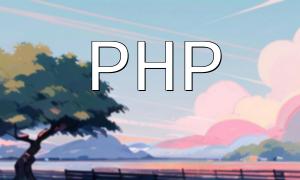With the rapid development of Internet of Things technology, various devices are becoming interconnected. Using PHP, a flexible and powerful programming language, developers can easily implement remote control of IoT hardware. This article demonstrates how to control Arduino-based smart devices with PHP through specific code examples.
To remotely control IoT devices, you first need a hardware device that supports network connectivity, such as an Arduino-based smart light. This device connects to the internet via WiFi and can respond to commands from the server to perform corresponding operations.
<?php // Include the official Arduino PHP-Serial class require_once 'php_serial.class.php'; // Define serial port and baud rate $port = '/dev/ttyACM0'; $baud = 9600; // Create serial object $serial = new phpSerial; $serial->deviceSet($port); $serial->confBaudRate($baud); $serial->deviceOpen(); // Get command from GET request $command = $_GET['command']; // Send command to device $serial->sendMessage($command); // Close serial connection $serial->deviceClose(); // Return control result echo "Device is " . ($command == 'on' ? 'turned on' : 'turned off'); ?>
In this example, we include the official PHP-Serial class to facilitate serial communication between PHP and the Arduino device. After setting the serial port and baud rate and establishing the connection, the script receives a command via GET request, sends it to the device, closes the connection, and returns the result.
With this code, users can control the device’s power simply by visiting specific URLs in a browser. For example, accessing http://your-server-address/device.php?command=on will turn the device on, while http://your-server-address/device.php?command=off will turn it off.
Beyond basic power control, PHP can be used for more complex IoT operations, such as reading sensor data and sending custom commands. It’s important to design the code logic according to your specific requirements. Additionally, ensuring security in IoT communications is crucial — implementing authentication and data encryption helps protect the integrity and privacy of the data exchanged.
This article demonstrates PHP’s strong adaptability in IoT hardware programming. With simple code, developers can achieve remote control of smart devices, greatly improving the efficiency and flexibility of IoT application development. We hope this guide helps you better understand and master PHP for IoT programming.









